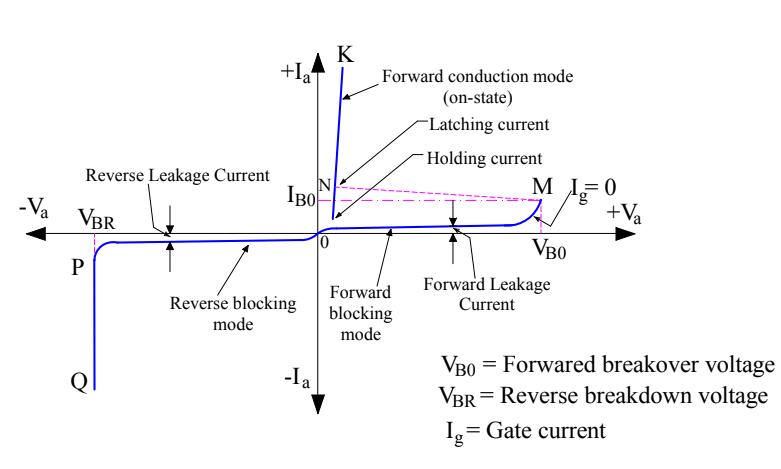The main difference between latching and holding current of SCR is that latching current is related with turn on process while holding current is related with turn off process of SCR.
Latching current of forward biased SCR is the minimum current which anode current must attain to continue to remain in forward conduction mode even when gate current is removed. If the value of anode current is less than this value, the SCR will not continue to conduct in forward direction if gate signal is removed. But once anode current becomes more than latching current, gate losses its control and it may be removed. The SCR will continue to conduct.
Holding current of SCR or thyrsistor is that minimum value of current below which anode current must fall to come in OFF state. This means if the value of holding current is 5 mA, then anode current of SCR must become less than 5 mA to stop conducting.
Thus we see that latching current and holding current are two different quantities. Figure below shows the V-I characteristics of SCR.

In this V-I characteristics, you can easily see the latching and holding current of SCR. It can also be observed that latching current is more than holding current. Once the current through the SCR i.e. anode current Ia falls below holding current, the current becomes zero. This means the SCR stops conducting.
Some of the major difference between latching and holding current is tabulated herein.
| Sr. No. | Latching Current | Holding Current |
| 1) | It is related with turn on process of SCR or thyristor. | It is related to turn off process. |
| 2) | Minimum current above which gate losses its control. | Minimum value of anode current below which it must fall to stop conducting in forward direction. |
| 3) | Value of latching current is more than that of holding current. | It is less than latching current. |
| 4) | Latching current is generally 2 to 3 times of the holding current. | – |
What an amazing explanation, thank you so much.
Perfect
Nicely Explained!
Clear explanation 👌